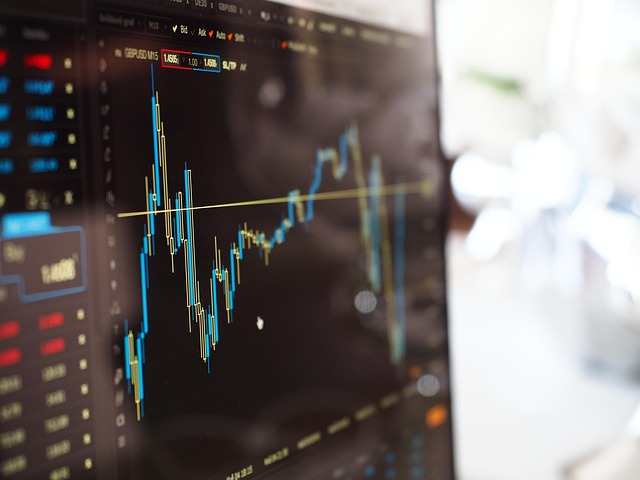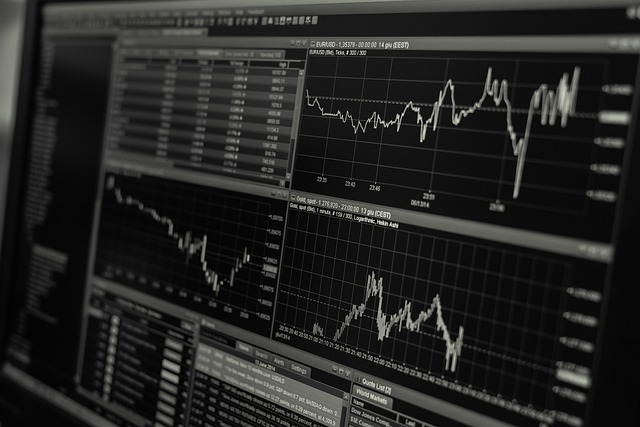What Does High Volume Mean in Trading? An In-Depth Analysis
Author: Jameson Richman Expert
Published On: 2025-09-02
Prepared by Jameson Richman and our team of experts with over a decade of experience in cryptocurrency and digital asset analysis. Learn more about us.
Understanding what high volume signifies in trading is fundamental for traders and investors seeking to accurately interpret market dynamics. Trading volume, defined as the total number of shares, contracts, or units exchanged over a specific period, acts as a vital indicator of market participation, liquidity, and investor interest. High volume often indicates robust activity and can serve as a catalyst for significant price movements, trend confirmations, or reversals. Recognizing the nuanced implications of high volume is crucial for developing effective trading strategies, avoiding false signals, and gaining deeper insights into overall market sentiment.

The Significance of High Volume in Market Analysis
In the realm of technical analysis, volume is frequently regarded as the "fuel" that drives price movements. A surge in volume typically accompanies strong buying or selling interest, providing a confirmation signal for observed price trends on charts. For example, a breakout above resistance levels on high volume suggests that the move is supported by substantial market participation, increasing the probability of a sustained trend. Conversely, a breakout with low volume may lack conviction, raising the likelihood of a false breakout or a temporary correction.
Beyond mere confirmation, high volume serves as a key indicator of market strength or weakness. It reflects the intensity of investor participation and helps distinguish between genuine trend shifts and mere price fluctuations driven by low-interest trades. For instance, during a bullish rally, consistently increasing volume can signal accumulation by institutional investors, often preceding prolonged upward moves. Conversely, elevated volume during declines may indicate panic selling or capitulation, often marking the end of a downtrend or correction phase.
From a broader perspective, high volume also aids in deciphering underlying market sentiment. During bullish phases, increased buying volume indicates investor confidence and the potential onset of a new uptrend. Conversely, during bearish phases or corrections, elevated selling volume may denote market capitulation, where traders liquidate positions en masse. Therefore, integrating volume analysis with price action enhances traders' ability to assess trend strength, sustainability, and the likelihood of reversals or breakouts.
Real-World Insights and Personal Experience
Throughout my trading career, I have observed that high volume often coincides with pivotal moments in the market. Initially, I relied heavily on price charts and common indicators like moving averages and RSI, but I soon realized that ignoring volume limited my understanding of market sentiment. For instance, during a significant rally, I noticed that volume was steadily increasing alongside price, confirming bullish momentum. Conversely, a sudden spike in volume during a downtrend signaled intensified selling pressure, serving as a warning to exercise caution.
One valuable lesson I learned was during a consolidation phase in a stock, where price remained range-bound but volume gradually increased. Recognizing this divergence, I interpreted it as either accumulation (preparing for a bullish breakout) or distribution (anticipating a decline). When the price eventually surged out of the range on high volume, I was able to capitalize on the move. This experience reinforced my understanding that volume is often the missing link in confirming the strength of price patterns and trend reversals.
Different Types of Volume and Their Market Implications
Not all high-volume days are created equal. Volume spikes can occur for various reasons—panic selling during market crashes, exuberant buying during euphoric rallies, institutional rebalancing, or algorithmic trading. Discerning the context behind volume surges is critical for accurate interpretation. For example, a spike driven by panic may lead to volatile, unpredictable price swings and quick reversals, while volume associated with institutional accumulation often precedes sustained uptrends.
Moreover, the pattern of volume changes—whether gradual or abrupt—can offer vital clues about market intentions. Gradual increases in volume during an uptrend suggest steady institutional accumulation, reflecting growing confidence and more sustainable momentum. Conversely, sudden spikes during a decline might indicate panic selling or capitulation, often signaling a market bottom or a reversal point. Understanding these different volume patterns helps traders differentiate between healthy participation and manipulative or emotional trading behaviors.
Analyzing volume in conjunction with candlestick patterns, trendlines, and fundamental news further refines interpretation. For instance, a large bullish engulfing candle accompanied by high volume represents a stronger buy signal than the same pattern on low volume. Conversely, divergence—where price makes new highs but volume declines—may warn of weakening momentum and potential reversal, signaling traders to exercise caution or tighten stops.

Volume in Different Market Contexts
The significance of high volume varies dramatically depending on the market phase and context. During consolidation, rising volume often indicates either accumulation (smart money buying quietly) or distribution (selling), setting the stage for a breakout or breakdown. For example, in my experience with a stock trading within a narrow range, increased volume signaled that a significant move was imminent. When the price finally surged out of the consolidation on high volume, the subsequent rally confirmed the validity of the move.
In trending markets, high volume on breakouts or breakdowns is typically seen as confirmation of the move’s validity. A high-volume breakout above resistance suggests strong buying interest and a higher likelihood of trend continuation. Conversely, in sideways or choppy markets, volume spikes can be misleading if not analyzed carefully within the broader context. False breakouts—often called "shakeouts"—are common in such environments, making it essential to corroborate volume signals with other technical tools such as trendlines, oscillators, or fundamental catalysts.
Tools and Platforms for Monitoring Trading Volume
Today's digital trading landscape offers a wealth of platforms with real-time volume data, vital for timely decision-making. Cryptocurrency exchanges like Binance, MEXC, Bitget, and Bybit provide detailed volume metrics across numerous assets, including features like depth charts, volume histograms, cumulative volume, and on-balance volume (OBV) indicators. These tools enable traders to detect high-volume trades, identify institutional activity, and anticipate breakouts or reversals promptly.
Traditional markets benefit from platforms such as TradingView, MetaTrader, and ThinkorSwim, which offer customizable volume indicators, multi-timeframe analysis, and integration with other technical tools. Mastering these platforms and interpreting volume data effectively can improve market insights significantly, especially when combined with indicators like VWAP (Volume Weighted Average Price), OBV, or the Chaikin Money Flow indicator. Advanced volume analysis also involves order book data, which shows real-time bid-ask spreads, helping traders gauge market pressure, liquidity, and potential support or resistance levels.
Practical Tips for Interpreting High Volume
- Confirm trends: Use high volume to validate bullish or bearish trends, especially during breakouts or breakdowns, thereby increasing the success probability.
- Identify potential reversals: Watch for volume divergences, such as declining volume during an uptrend or spikes during a downtrend, which may signal exhaustion and a forthcoming reversal.
- Monitor consolidation phases: Rising volume during consolidation suggests accumulation or distribution, indicating an imminent significant move.
- Beware of false signals: Not every volume spike leads to a meaningful price change; always corroborate with other technical indicators, chart patterns, or fundamental news to avoid traps.

Conclusion: The Strategic Value of High Volume Analysis
In essence, understanding what high volume means in trading is a cornerstone of effective market analysis. It provides crucial insights into market participation, institutional activity, and investor sentiment, helping to validate or challenge price movements. When combined with other technical tools and fundamental analysis, volume analysis becomes a powerful method for enhancing decision-making, reducing false signals, and timing entries and exits more precisely.
From my own trading journey, I can attest that diligent focus on volume often makes the difference between a profitable trade and a missed opportunity or costly mistake. Embracing volume analysis as a central component of your trading toolkit will undoubtedly refine your approach, improve your market reading skills, and increase your chances of long-term success in the complex landscape of financial markets. Remember, volume is not just a number—it’s the pulse of the market, revealing underlying strength or weakness that often precedes price action.